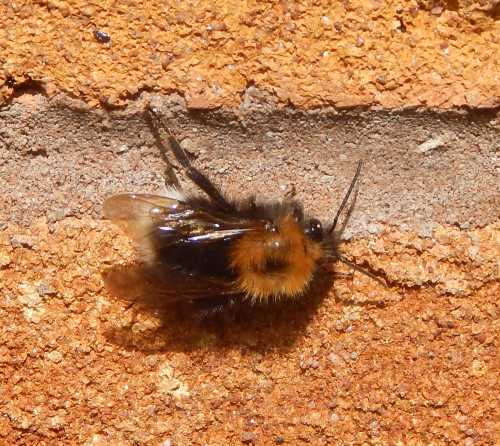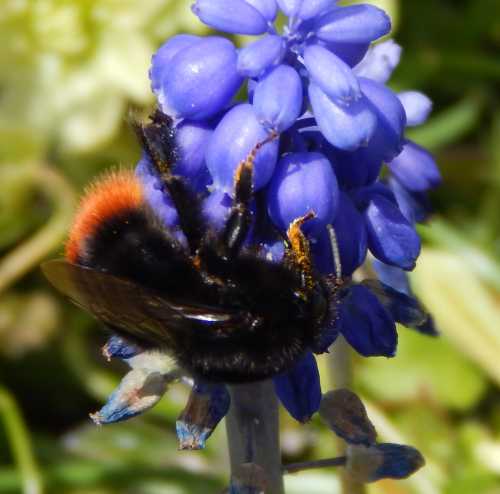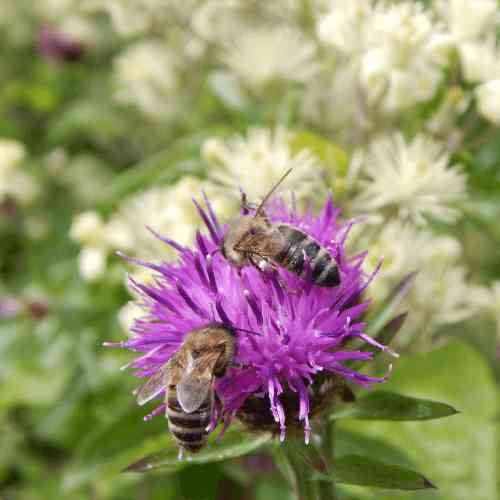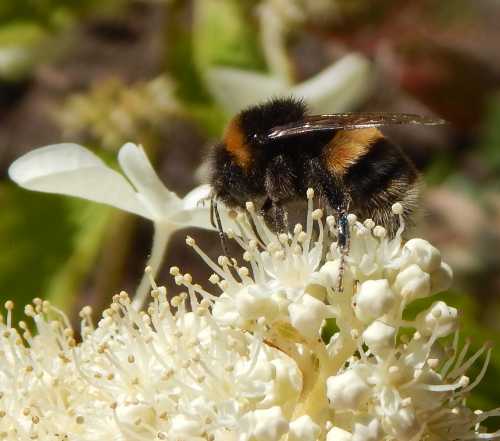Bees In The Vent - What Should I Do?
Bumble bees sometimes make use of vents into houses and other buildings, as a location to establish a nest. I sometimes get queries of this nature, normally relating to vents in people's homes.
If you discover you have a bumble bee nest in your vent, you may find the following advice helpful. Below is a recent query:
I have noticed bumble bees entering a kitchen vent in my house. I think there is a nest in there. What's the best thing to do?
Will the bees get in to the house? I understand they will be gone at some point, but will they cause damage?
Kerry, UK
 Tree bumble bee - Bombus hypnorum on the wall of our house.
Tree bumble bee - Bombus hypnorum on the wall of our house.
Because nest sites for bumble bees are hard to find, bees are having to be opportunistic in finding suitable places to raise their colonies.
For some species, this can mean occupying a bird box, using an old plant pot behind the greenhouse, or perhaps finding a spot in a warm, dry garden shed among other inventive solutions.
Other bumble bees find refuge in a vent. I have never had this, although one year a pair of wrens successfully reared their young in our kitchen vent, which at that time was concealed behind a climbing jasmine.
Will bumble bees in a vent cause damage to my property?
No, they won't. Bumble bees do not bite, chew or damage property.
Will the bees get in to the house?
That depends on the vent itself and where it leads.
As long as the bees can get out of the vent again, they will want to leave the nest and get out into the garden to forage on flowers.
However, whilst it's possible one or two might get in to the house, this is probably no more likely than if the window were open and bees got in that way (or any other insect or spider, for that matter, but despite this, we just get on with it don't we, and open our windows as required).
How long will the nest last? I have a swarm of bumble bees near the vent
It may be that you have tree bumble bees - Bombus hypnorum (pictured above) nesting in the vent.
These are males awaiting the emerging queens to mate, in a small cloud - nothing like a honey bee swarm which consists of a mass of thousands of bees. The appearance of the males means the colony is mature and will not be around for much longer, perhaps only a week or so. These males cannot sting, although females of course, can do so.
If you are concerned, read my page about tree bumble bees in our compost bin. Whilst stings can happen, it is not especially common as long as they are left alone.
Bumble bee nests only last a season - see Bumble Bee Life Cycle.
 A Queen red tailed bumble bee on blue muscari flower.
A Queen red tailed bumble bee on blue muscari flower.I think the nest in my vent might be honey bees
If you find honey bees are attempting to establish a nest in the fabric of your home, you should locate a local beekeeper and seek advice (use your internet search engine to find a local group) - visitors from the USA and Canada please see this list of beekeeping associations.
They may have contacts of relevant professionals if required. See also: Bees In The Wall.
Honey bees can sometimes be vacuumed out of buildings, without harming the bees themselves. Below is an image of honey bees to help you identify whether this is the type of species.
 Honey bees on knapweed
Honey bees on knapweedIf you found this page helpful or interesting, I'd really be grateful if you would share it with others - if not this page, perhaps another, such as Gardening For Bees.
Thank you so much :) .

